Anthracene
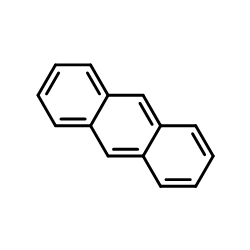
Anthracene structure
|
Common Name | Anthracene | ||
|---|---|---|---|---|
| CAS Number | 120-12-7 | Molecular Weight | 178.229 | |
| Density | 1.1±0.1 g/cm3 | Boiling Point | 337.4±9.0 °C at 760 mmHg | |
| Molecular Formula | C14H10 | Melting Point | 215 °C | |
| MSDS | Chinese USA | Flash Point | 146.6±12.8 °C | |
| Symbol |


GHS07, GHS09 |
Signal Word | Warning | |
| Name | anthracene |
|---|---|
| Synonym | More Synonyms |
| Density | 1.1±0.1 g/cm3 |
|---|---|
| Boiling Point | 337.4±9.0 °C at 760 mmHg |
| Melting Point | 215 °C |
| Molecular Formula | C14H10 |
| Molecular Weight | 178.229 |
| Flash Point | 146.6±12.8 °C |
| Exact Mass | 178.078247 |
| LogP | 4.68 |
| Vapour density | 6.15 (vs air) |
| Vapour Pressure | 0.0±0.3 mmHg at 25°C |
| Index of Refraction | 1.715 |
| InChIKey | MWPLVEDNUUSJAV-UHFFFAOYSA-N |
| SMILES | c1ccc2cc3ccccc3cc2c1 |
| Water Solubility | 0.045 mg/L (25 ºC) |
CHEMICAL IDENTIFICATION
HEALTH HAZARD DATAACUTE TOXICITY DATA
MUTATION DATA
|
| Symbol |


GHS07, GHS09 |
|---|---|
| Signal Word | Warning |
| Hazard Statements | H315-H319-H335-H410 |
| Supplemental HS | Repeated exposure may cause skin dryness or cracking. |
| Precautionary Statements | P261-P273-P305 + P351 + P338-P501 |
| Personal Protective Equipment | dust mask type N95 (US);Eyeshields;Gloves |
| Hazard Codes | Xi:Irritant |
| Risk Phrases | R36/37/38 |
| Safety Phrases | S26-S60-S61-S24/25-S16-S9-S45-S36/37-S62 |
| RIDADR | UN 3077 9/PG 3 |
| WGK Germany | 2 |
| RTECS | CA9350000 |
| Hazard Class | 9.0 |
| HS Code | 29029010 |
| Precursor 0 | |
|---|---|
| DownStream 10 | |
| HS Code | 2902909090 |
|---|---|
| Summary | 2902909090 other aromatic hydrocarbons。Supervision conditions:None。VAT:17.0%。Tax rebate rate:9.0%。MFN tariff:2.0%。General tariff:30.0% |
|
Anti-epidermal growth factor receptor conjugated mesoporous zinc oxide nanofibers for breast cancer diagnostics.
Nanoscale 7(16) , 7234-45, (2015) We report the fabrication of an efficient, label-free, selective and highly reproducible immunosensor with unprecedented sensitivity (femto-molar) to detect a breast cancer biomarker for early diagnos... |
|
|
High-Sensitivity Surface-Enhanced Raman Scattering (SERS) Substrate Based on a Gold Colloid Solution with a pH Change for Detection of Trace-Level Polycyclic Aromatic Hydrocarbons in Aqueous Solution.
Appl. Spectrosc. 69 , 574-9, (2015) In this study, a gold colloid solution whose parameters were optimized, and without any surfactants, was developed as a surface-enhanced Raman scattering (SERS) substrate for the detection of trace-le... |
|
|
L-cysteine-capped core/shell/shell quantum dot-graphene oxide nanocomposite fluorescence probe for polycyclic aromatic hydrocarbon detection.
Talanta 146 , 780-8, (2015) Environmental pollutants, such as the polycyclic aromatic hydrocarbons (PAHs), become widely distributed in the environment after emission from a range of sources, and they have potential biological e... |
| EINECS 204-371-1 |
| Anthracene |
| MFCD00001240 |
| Tricyclo[8.4.0.03,8]tetradeca-1,3,5,7,9,11,13-heptaene |
| Paranaphthalene |
| ANTHRACEN |
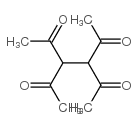 CAS#:5027-32-7
CAS#:5027-32-7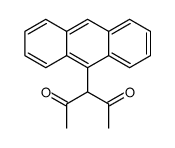 CAS#:111982-85-5
CAS#:111982-85-5 CAS#:723-62-6
CAS#:723-62-6 CAS#:1499-12-3
CAS#:1499-12-3 CAS#:111354-83-7
CAS#:111354-83-7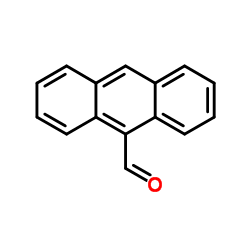 CAS#:642-31-9
CAS#:642-31-9 CAS#:106324-36-1
CAS#:106324-36-1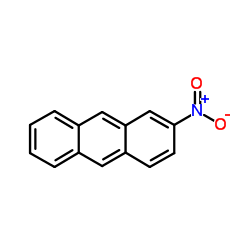 CAS#:3586-69-4
CAS#:3586-69-4 CAS#:36925-31-2
CAS#:36925-31-2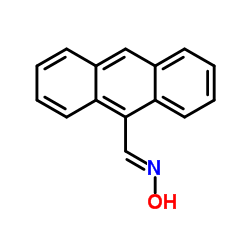 CAS#:34810-13-4
CAS#:34810-13-4
